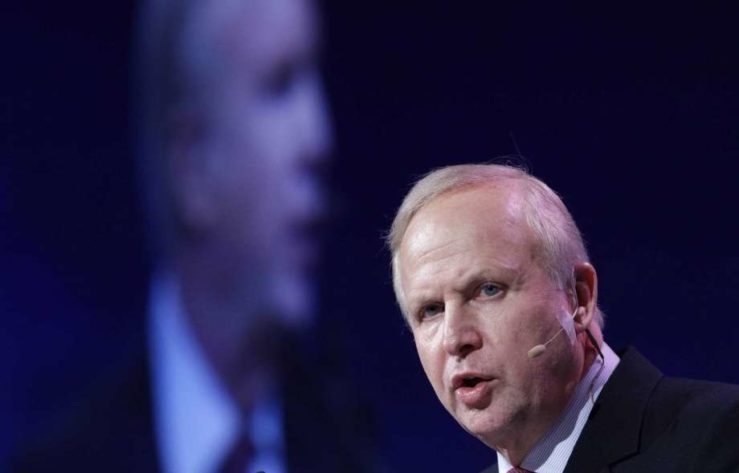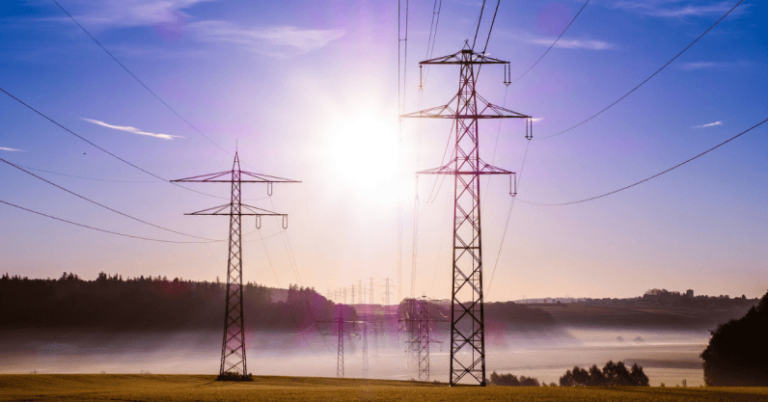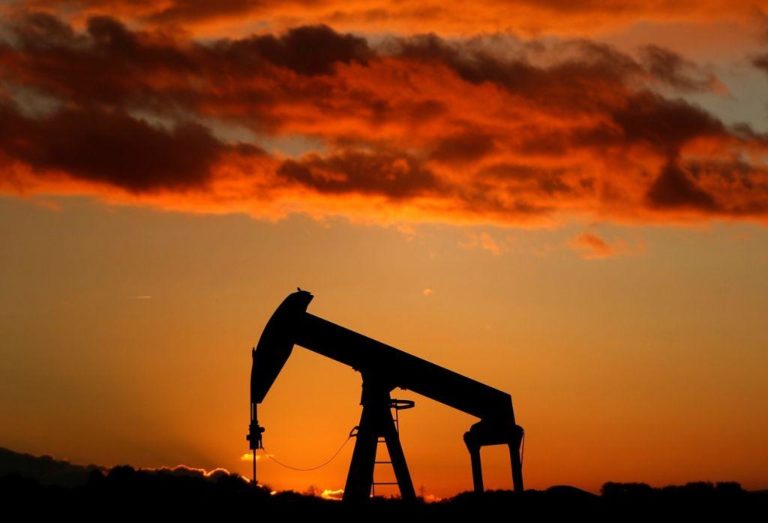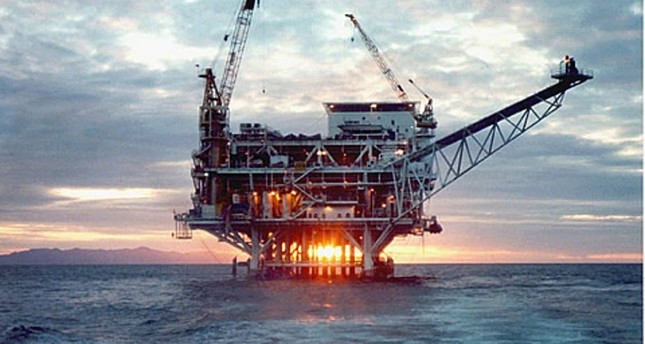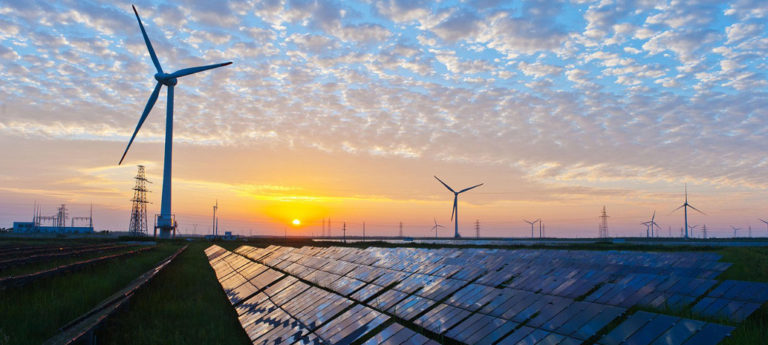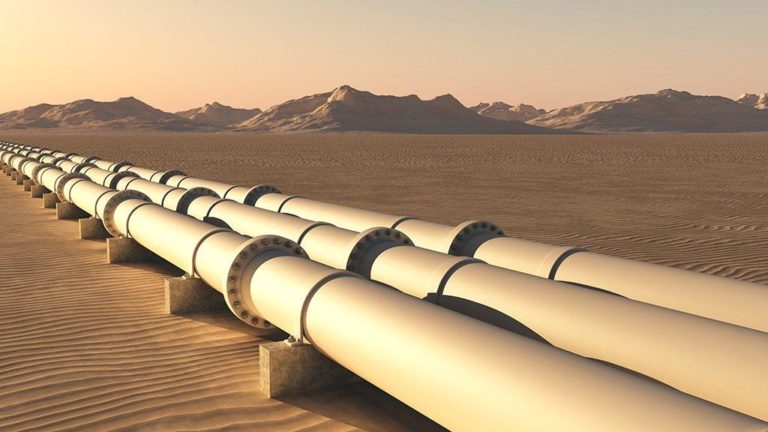رسالة مفتوحة إلى وزير الخارجية الأميركي: زيارتك إلى لبنان… ديبلوماسية الطاقة



السيد الوزير،
تأتي زيارتكم إلى لبنان وقت يقف هذا الجزء من العالم امام فرصة نادرة للتطور وخطر كبير للانفجار، ولست أشير إلى هذين الامرين المهمين كمواطن لبناني فحسب، وانما بصفتي شخصاً يقيم ويعمل في المنطقة الأورومتوسطية والشرق الأوسط المضطربة منذ مدة طويلة، وهدفي هو تجنب جولة جديدة من عدم الاستقرار في لبنان والدول المجاورة له.
كما تعلمون فقد تم اكتشاف رواسب هيدروكربونية متعددة المستوى تحت شرق البحر المتوسط، مما يوفر فرصة تاريخية لرفع مستوى الاقتصاد الإقليمي والحد من الفقر أو حتى القضاء عليه كما وتهدئة التوترات الإقليمية، ولكن لسوء الحظ، يتم التأخر من الاستفادة من هذه الموارد بسبب قلة عدد الدول التي رسمت حدودها البحرية مع جيرانها. وإذا ما وضعنا جانبا مصير حدود فلسطين، نجد ان هنالك 12 “حدوداً” بحرية بين الدول الساحلية السبع الرئيسية: اليونان وتركيا وقبرص وسوريا ولبنان وإسرائيل ومصر، قد تمت تسوية اثنين منها فقط، أي ما نسبته (17٪) من خلال تطبيق معايير المعاهدات الثنائية لقانون البحار. في منطقة تحتوي على مخزون نفطي يقدَّر بأكثر من تريليون دولار من النفط والغاز، لا تزال 83٪ من الحدود البحرية من دون تحديد نهائي، مما يشكل مخاطر كبيرة على التنمية في العديد من بلدان المنطقة بما فيها لبنان.
إن الحاجة إلى الإسراع بالتنمية وضخ الإيرادات المالية الجديدة هي من الامور الملحّة والمستعجلة، خصوصا ان دول المنطقة تواجه الكثير من المشاكل الاقتصادية الحادة. من هنا ولحسن الحظ، فان تقنيات رسم الخرائط الحديثة بواسطة تطبيقات قانون البحارLOS تتيح تسوية جميع النزاعات البحرية بهدوء، والقيام بها بكل سهولة وانسيابية ودقة شبه مطلقة.
مما لا شك فيه ان اجتماعاتكم في لبنان ستتناول العديد من الامور والمواضيع المتشابكة، ولكن يبقى الموضوع الأكثر أهمية هو مشروع الولايات المتحدة الدائم لتعزيز الاتفاق على الحدود البحرية في الشرق الأوسط، ولا سيما بين المنطقة الاقتصادية الخالصة اللبنانية والمنطقة الإسرائيلية. هذا هو المجال الوحيد الذي تتمتع فيه السياسة الأميركية بأكبر مكانة لإحداث تغييرات إيجابية، وفي الوقت عينه أكبر خطر لإمكان حصول عواقب غير مقصودة.
يعتبر لبنان واحداً من بين 50 دولة وقّعت ميثاق الأمم المتحدة عام 1945. ومذذاك تمسكت السياسة الخارجية اللبنانية بشروط تطبيق هذا الميثاق، وعلى رأسها الالتزام بالسعي الدائم إلى حل سلمي للنزاعات الدولية، وهذا على الرغم من الظروف الصعبة التي واجهها لبنان منذ مدة طويلة كدولة على خط المواجهة في الصراع العربي – الإسرائيلي.
على الرغم من – وعلى الأقل جزئياً بسبب – موقع بلدهم الاستراتيجي والمعرّض للهزات السياسية والامنية ونظامه المعقّد، فإن اللبنانيين يتمتعون بمرونة هائلة وقدرة غريبة على الخروج من مشاكلهم المستعصية. وعلى مر التاريخ ومهما كانت الأزمة، فإن الشعب اللبناني بارع للغاية في التأقلم مع الازمات والخروج منها. لكن هذه الدورة لا يمكن أن تستمر إلى أجل غير مسمى، لا سيما عندما يكون الدَّين العام في لبنان يعادل أكثر من 150٪ من الناتج المحلي الإجمالي. وقد أوضحت الدول المانحة في مؤتمر عُقد اخيراً في باريس لمساعدة لبنان اقتصاديا، أن تعهداتها لن تتحقق إلا إذا نفّذ لبنان إصلاحات شاملة وتدابير جادة لمكافحة الفساد وغير ذلك من الخطوات الهادفة إلى تنظيم وضعه المالي.
على الرغم من هذه التحديات وغيرها، قد يكون لبنان على أعتاب عصر جديد مزدهر وذلك نظراً إلى الكميات الكبيرة المحتملة من الهيدروكربونات البحرية التي يأمل لبنان في البدء باستغلالها في السنوات المقبلة، اذ فور بدء الإنتاج، فإن التأثيرات ستكون كبيرة وعلى كل الصعد. فمجرد إنتاج الغاز الطبيعي للاستهلاك المحلي سيسمح لمحطات الطاقة في لبنان بالتوقف عن استعمال المازوت والغاز اويل اللذين يزيدان تكاليف تشغيل المحطات، ويسببان تلوثاً كبيراً، كما ينهكان معامل التوليد في اوقات قياسية.
بناءً على خبرتي في مجال الطاقة والتي تمتد الى أكثر من 40 عامًا، سيكون هذا التحسن مجرد بداية لأن لبنان سيكون أيضا مصدرا للطاقة، مما يفتح امامه عائدات نقدية جديدة وكبيرة، ستمكن الدولة أولاً من خفض الإنفاق على العجز، والاقتراض بمعدلات أقل، والبدء بتسديد رصيد ديونها. بعد ذلك، ستحصل الحكومة على الاموال اللازمة للقيام باستثمارات غير مسبوقة في قطاعات مهمة كالطرق والمدارس والمستشفيات والبنية التحتية الأساسية الأخرى، اضافة الى الفرص المباشرة وغير المباشرة التي يولّدها قطاع الطاقة الناشئ، وهذا الامر سيكون له تأثير تحفيزي فوري وطويل الأمد، مما يؤدي إلى خلق عشرات أو حتى مئات الآلاف من فرص العمل التي تؤمن اجرا جيدا. كما أنه سيجعل الاقتصاد برمته أكثر قدرة على المنافسة، ويزوّد شبابنا التعليم المفيد والحديث الذي يحتاجون إليه في القرن الحادي والعشرين، ويمنح جميع اللبنانيين الرعاية الصحية الجيدة والشاملة. وإذا تمت إدارة هذه الثروة بحكمة، فإن عائدات الغاز يمكن أن تقضي على الفقر وعلى الفروق الاجتماعية الحادة خصوصا في المناطق المحرومة التي توفر للجماعات الإرهابية الارض الخصبة لتجنيد افراد جدد.
لا أشك في أن اللبنانيين يمكنهم دفع وطنهم الى الامام، لكنهم في حاجة إلى اتخاذ خيارات صعبة وصياغة حلول قابلة للتطبيق، والابتعاد عن تنفيذ تلك التي تطالب بها القوى الاقليمية والاجنبية. في الواقع، فإن العديد من مشاكلنا الحالية تنبع على وجه التحديد من القرارات التي اتُخذت على عجل، تحت ضغط خارجي و/ أو دون إجماع محلي كاف. ومع ذلك، فإن العديد من اللبنانيين ممتنّون لدور الولايات المتحدة في التوسط لحل الخلاف مع اسرائيل المتعلق بالمنطقة الاقتصادية الخالصة. من جهة أخرى، يشك الكثير من اللبنانيين في أن هدف واشنطن لا يكمن في تسهيل التوصل إلى صفقة عادلة، بل فرض واقع غير متوازن لمصلحة إسرائيل. وفي حال رضوخ الحكومة اللبنانية لهذا الحل غير المتوازن ستعرف خسارة كبيرة في شرعيتها، اضافة الى معارضة محلية قوية، وسيصل الامر الى تقديم استقالات من جانب وزراء رئيسيين في الحكومة، وربما نهاية قدرتها على الحكم.
هناك الكثير من المواد الهيدروكربونية في حوض مشرق المتوسط، وهي تكفي جميع المطالبين بها وفقاً لحصصهم القانونية والشرعية، ولا يطلب أي لبناني الحصول على مزايا خاصة او على زيادة غير قانونية، وانما معاملة عادلة ومتساوية. ان قضية المنطقة الاقتصادية الخالصة في لبنان غير قابلة للتغيير او للتلاعب، بدءاً بالموقع الصحيح للحدود البرية في رأس الناقورة التي تم تحديدها بموجب اتفاقية الهدنة لعام 1949، والتي يمكن الآن تحديد موقعها باتقان متناهٍ بواسطة تقنيات رسم الخرائط الدقيقة. ويمكن الاتكاء على هذه النقطة لحل الامور العالقة الاخرى. في أي إجراءات قضائية، يتم مطابقة كل عنصر علمي بمجموعة قواعد قانون البحار، والتي تستمد أساسا من ثلاثة مصادر:
اتفاق الأمم المتحدة لقانون البحار لعام 1982 (UNCLOS)، وهو مشروع تم تصوره في الأصل من قبل الرئيس الأميركي ترومان واعتمدته الى الآن 168 دولة كأساس لكتاب قواعد لوس أنجلس العالمي وهو الكتاب الوحيد المعتمد.
المبادئ والإجراءات المنصوص عليها في اتفاق الأمم المتحدة لقانون البحار والتعديلات عليه.
السوابق التي أنشأتها محكمة اتفاقية الأمم المتحدة لقانون البحار والمحكمة الدولية لقانون البحار (ITLOS) والإجراءات القانونية الأخرى ذات الصلة.
ان التطورات التكنولوجية المتسارعة وصلت إلى النقطة التي يكون فيها تأثيرها حاسماً في حل النزاعات البحرية. في الواقع، تم الفصل في جميع القضايا الـ 13 المعروضة اخيرا امام المحاكم البحرية المختصة على أساس علمي. وهذا الامر ادى الى الدقة في رسم الخرائط البحرية.
من هنا فانه بناءً على القواعد المعتمدة والعلوم، لا يمكن أن يكون هناك أي شك حول نتائج الحكم في هذه الحالة: سيتم منح لبنان في حال تطبيق القواعد العلمية معظم مساحة الـ881 كيلومتراً مربعاً موضع النزاع البحري. سواء تم تحديد الترسيم داخل قاعة المحكمة أو خارجها. علميا يتم رسم الخطوط وفقا للخرائط المتاحة (والتي يمكن طلبها الآن وتسلّمها في غضون خمسة أيام عمل على الأكثر) من المناطق الساحلية للدولتين. في الواقع، في ايامنا هذه فإن إعداد قضية وفقا لقانون البحار يكون بنسبة 80٪ من الناحية العلمية ولا تشكل الاجراءات القانونية سوى 20٪ فقط. في العام 2010 قبلت إسرائيل تطبيق قواعد (LOS) قانون البحار من خلال موافقتها عليها كأساس لمعاهدة المنطقة الاقتصادية الخالصة الموقعة مع قبرص، وبالتالي فان اي محاولة لحل النزاع مع لبنان يفرض عليها تطبيق القواعد المذكورة.
بالطبع، أنتم تدركون الصعوبات التي يعرفها هذا الملف، فإسرائيل ليست من الدول الموقعة على اتفاقية الأمم المتحدة لقانون البحار، لذلك فإن حكم المحكمة الدولية لقانون البحار ITLOS أمر مستحيل من الناحية الاجرائية، ولبنان لا يعترف بإسرائيل، لذا فإن المفاوضات الثنائية لا مكان لها. لذلك كانت الحاجة إلى وساطة خارجية مقبول بها من الطرفين، ومن هنا يكمن الدور الذي لا غنى عنه والبنّاء للولايات المتحدة، وهو يتوقف على طريقة تعاطي دولتكم مع هذا الموضوع. إذا كانت أميركا تتصرف كحَكم عادل، فإن النتيجة النهائية لا يمكن أن تكون موضع شك لأنها ستستند إلى العلم وقواعد قانون البحار المرعية الاجراء. وفي هذه الحالة يمكن أن تمنح المنطقة بأسرها فرصة لنزع فتيل التوترات. من جهة أخرى، إذا قررت الولايات المتحدة التصرف بشكل أساسي كحليفة لإسرائيل، فلن يكون ممكناً أن تقبل الحكومة اللبنانية بأي اقتراح يبتعد عن القواعد القانونية والعلم الحديث.
السيد الوزير،
نظراً الى أننا نعرف التوجه العملي الذي سيفيد طرفي النزاع، فلماذا لا تأخذ أقصر الطرق وأكثرها ثقة؟ وتكمن بتقديم المشورة الى الإسرائيليين لقبول ترتيب عادل للمنطقة الاقتصادية الخالصة، والتأكد من أنهم (كما نحن) سيحترمون نص هذا الترتيب وروحه، وبالتالي إقناعهم بالتوقف عن تهديد اللبنانيين بالحرب. واذا كانت الولايات المتحدة تتوسط لحل متوازن في هذا النزاع، فستعزز قدرتها على التوسط بين الدول المجاورة الأخرى – وخصوصا قبرص واليونان وتركيا – وبالتالي يكون لها تأثير على استقرار المنطقة بأسرها.
من هنا آمل أن تستمر الولايات المتحدة، بالتنسيق مع جهات فاعلة أخرى مثل الأمم المتحدة، في استخدام مساعيها الحميدة للمساعدة في حل مسألة المنطقة الاقتصادية الخالصة. كما آمل أيضا أن يفتح التقدم في هذا الملف الطريق لإجراء حوارات داخلية ذات مغزى حول الإصلاحات البعيدة المدى على المستويين السياسي والاقتصادي، والتي يحتاج اليها لبنان.
باختصار، السيد الوزير، نحن اللبنانيين في حاجة إلى أن نكون واقعيين، ويمكن الولايات المتحدة أن تساعدنا ولكن شرط ان يكون ذلك عبر مساعدة لبنان، وليس فقط إسرائيل، وجميع اللبنانيين، وليس بعضهم.

خبير طاقوي
رودي بارودي
